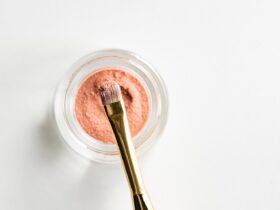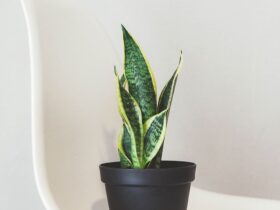Perfume atomizers, seemingly small and insignificant, play a vital role in preserving the integrity of your favorite fragrances and enhancing your overall perfume experience. Choosing the right atomizer can make a significant difference in how your perfume is stored, applied, and enjoyed. This comprehensive guide will walk you through everything you need to know to select the perfect perfume atomizer for your needs.
Why Use a Perfume Atomizer?
Before diving into the types of atomizers, let’s understand why they’re so important. Direct exposure to air, light, and temperature fluctuations can degrade the delicate molecules that make up a perfume. Atomizers provide a protective barrier, minimizing these factors and helping your fragrance last longer. Here’s a breakdown of the key benefits:
- Preservation: Atomizers minimize air exposure, preventing oxidation and evaporation, thus extending the lifespan of your perfume.
- Portability: Travel-sized atomizers allow you to carry your favorite scents without lugging around bulky perfume bottles, making them perfect for travel and on-the-go touch-ups.
- Convenience: Refilling atomizers is often easier and more controlled than directly spraying from a large bottle, especially for those with larger, less portable original bottles.
- Controlled Application: Atomizers offer a more controlled and even distribution of fragrance, preventing over-spraying and ensuring a subtle, consistent scent.
- Hygiene: Sharing perfumes directly from the original bottle can introduce bacteria. Atomizers allow for a more hygienic sharing experience.
Types of Perfume Atomizers
The market offers a wide variety of perfume atomizers, each with its own unique features and benefits. Understanding the different types will help you narrow down your choices.
1. Glass Atomizers
Glass atomizers are a classic choice, known for their elegance and non-reactive properties. Glass does not interact with the perfume, ensuring the scent remains pure and unchanged. They are generally more expensive but offer superior preservation.
- Pros: Chemically inert, aesthetically pleasing, recyclable, often durable.
- Cons: Can be fragile, more expensive than plastic alternatives.
2. Plastic Atomizers
Plastic atomizers are a more affordable and lightweight option. While convenient, it’s crucial to choose high-quality, BPA-free plastic to prevent any chemical leaching into your perfume. PET (Polyethylene Terephthalate) and PP (Polypropylene) are generally considered safer choices.
- Pros: Affordable, lightweight, shatter-resistant.
- Cons: Potential for chemical leaching (choose BPA-free and appropriate plastic types), may not be as aesthetically pleasing as glass.
3. Metal Atomizers
Metal atomizers, often made of aluminum or stainless steel, offer excellent durability and protection from light. However, it’s important to ensure the interior is lined with a non-reactive material to prevent any interaction with the perfume. Unlined metal can alter the scent over time.
- Pros: Durable, protects from light, stylish.
- Cons: Can react with perfume if unlined, may add weight.
4. Twist-Up Atomizers
Twist-up atomizers are a popular choice for travel. They typically have a retractable nozzle that protects against accidental sprays and leaks.
- Pros: Travel-friendly, leak-proof, compact.
- Cons: Can be more difficult to fill, may not hold as much perfume.
5. Bulb Atomizers
Bulb atomizers are often associated with vintage perfume bottles. They use a squeeze bulb to create a fine mist. While aesthetically appealing, they may not be the most practical for everyday use.
- Pros: Vintage aesthetic, creates a fine mist.
- Cons: Can be less precise, more prone to leaks, may require more maintenance.
Factors to Consider When Choosing an Atomizer
Beyond the material, several other factors should influence your choice of perfume atomizer:
1. Size and Capacity
Consider how much perfume you want to carry and how frequently you plan to refill the atomizer. Smaller atomizers (2-5ml) are ideal for short trips or trying out new scents, while larger atomizers (10-30ml) are better for longer durations. Check TSA guidelines if you are flying.
2. Nozzle Quality
The nozzle is crucial for creating a fine, even mist. Look for atomizers with high-quality nozzles that don’t leak or clog easily. Read reviews to assess the nozzle performance.
3. Leak-Proof Design
A leak-proof design is essential, especially for travel. Choose atomizers with secure closures and tight seals to prevent spills in your bag. Twist-up atomizers are generally more leak-resistant.
4. Ease of Refilling
Consider how easy it is to refill the atomizer. Some atomizers have wide openings, while others require the use of a funnel or syringe. Atomizers that fill from the bottom are often easier to use without spillage.
5. Aesthetics
While functionality is paramount, aesthetics also play a role. Choose an atomizer that complements your personal style and adds to the overall perfume experience. Consider the color, shape, and material.
6. Price
Atomizers range in price from inexpensive plastic options to more luxurious glass or metal designs. Set a budget and choose an atomizer that meets your needs without breaking the bank. Remember that investing in a higher-quality atomizer can save you money in the long run by preserving your perfume.
How to Fill a Perfume Atomizer
Refilling a perfume atomizer is usually a straightforward process, but here are some tips to minimize spills and waste:
- Clean the Atomizer: Before refilling, ensure the atomizer is clean and dry. Rinse it with distilled water and allow it to air dry completely.
- Use a Funnel (Optional): A small funnel can help direct the perfume into the atomizer’s opening, preventing spills.
- Slow and Steady: Pour the perfume slowly and carefully to avoid overfilling. Leave a small air gap at the top.
- Wipe Clean: After refilling, wipe the atomizer clean with a soft cloth to remove any spills.
Caring for Your Perfume Atomizer
Proper care and maintenance will prolong the life of your perfume atomizer and ensure it continues to function optimally:
- Clean Regularly: Clean your atomizer periodically to remove any residue or buildup. Rinse it with distilled water and allow it to air dry.
- Store Properly: Store your atomizer in a cool, dark place to protect it from light and temperature fluctuations.
- Replace as Needed: If the nozzle becomes clogged or the atomizer starts to leak, it’s time to replace it.
Conclusion
Choosing the right perfume atomizer is an investment in preserving your precious fragrances and enhancing your overall perfume experience. By considering the different types of atomizers, key factors like size, nozzle quality, and ease of refilling, and implementing proper care and maintenance practices, you can select the perfect atomizer to meet your needs and enjoy your favorite scents for years to come.
Frequently Asked Questions (FAQs)
What is the best material for a perfume atomizer?
Glass is generally considered the best material as it is chemically inert and won’t react with the perfume. However, high-quality BPA-free plastic and lined metal atomizers are also good options.
How do I clean my perfume atomizer?
Rinse the atomizer with distilled water and allow it to air dry completely. Avoid using harsh chemicals or soap, as these can leave a residue that affects the scent of your perfume.
Can I put any type of perfume in an atomizer?
Yes, you can generally put any type of perfume in an atomizer. However, avoid putting very thick or oily fragrances in atomizers with fine nozzles, as they may clog.
How long will perfume last in an atomizer?
Perfume can last for several months in a well-sealed atomizer, especially if stored in a cool, dark place. However, it’s best to use the perfume within a few months to ensure optimal scent quality.
Are perfume atomizers allowed on airplanes?
Yes, perfume atomizers are generally allowed on airplanes, but they must comply with TSA guidelines for liquids. Check the latest TSA regulations before traveling.
















Leave a Reply